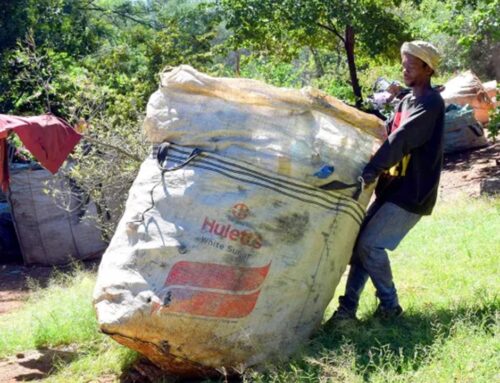“Reap as you have sown” is the old proverb. A time may come when we will truly experience the real meaning behind this saying, when preppers and survivalists alike might need to settle in one place for a prolonged period of time, either out of necessity or logic.
Imagine the outcomes of all the different scenarios we might face in the future. One of such possibilities could be a complete economic collapse, on a regional or even global scale. What to do then? When possibly your entire country is stopped dead within its tracks and chaos ensues as the entire infrastructure quickly fails. With possibly no chance or means to purchase food and other items, and your supplies dwindling, you start questioning your own skills and level of preparedness. Can you rely on yourself and the nature around you to effectively produce a supply of food to get you through the winter? Two of the most common options are hunting and growing food. While hunting can be an easier method of feeding yourself, success might not be always guaranteed. You can never be certain that your traps will be efficient, or that the wildlife will be present, especially in winter time. That’s where growing food is better. Depending on the circumstances and your surroundings, you may need to look to your abilities to raise your own food. This is why it is a good and logical choice to write a short introductory guide to the basics of gardening, with the goal to present everyone with the chance to sustain themselves with healthy food in times when they might need it.
The benefits of growing food
We are trying to show all the aspects of survival and preparedness, and cover all the possible scenarios you might find yourself in. A possible outcome of survival is the necessity or a chance to settle in a place and remain there for a certain time period. In such a scenario, a logical problem is the food supply – what you have in stock might not last for long, so you’ll want to look to other methods of providing food. And what better place than the soil around you.
In many outcomes of disaster money loses value and significance and food becomes scarce. Of course, as a person who is prepared, you have a generous amount of food in supply, but most of it is generic canned food, freeze dried foods with poor nutritional values. But you know that even a supply as big as yours can not last forever. Given time you will have to find a way to fill it up again. And the best way to replenish nutrients lacking in canned foods, is organic, self produced vegetables.
If you follow these steps and commit to dedicating a certain amount of time and physical strength in order to provide food for yourself, you can always be one step ahead and have yet another means of survival in you arsenal.
Providing the ground can be cultivated (i.e. that the disaster you’re facing is economic rather than nuclear), and that you opted for stocking some common seeds, raising some basic vegetables should not be too hard, and it can be a great opportunity to lengthen the life of your food supply. In the end, some of the crops you raise can be preserved and prepared to replenish your stock for the time when you hit the road again.
The beginnings of your garden
Basics of gardening might sound too simple – prepare the soil, plant the seeds, take care and water – and hope for the best. When surviving, other things might pressure you and take away the free time for attending your garden, but in theory, if you dedicate a little bit of your time each day to look after your patch of vegetables, then you have the rest of the day free to solve different problems.
When deciding on the spot to plant, the best choice for a garden patch is the part evenly covered with sunlight during the day. All life thrives on the life-giving light of the sun. Likewise, while growing and developing their cells, the plants collect directly the energy of the sun. Afterwards, all of this energy is transferred to the man, once the fresh food is consumed.
Before beginning preparations for planting, make sure that the chosen plot of land is sufficiently clear, accessible and arable. For all the basic plant life to succeed, the logical and common necessities are needed – a healthy dose of sunlight, regular water supply and importantly – the room to grow. To ensure your plants have enough room to grow pay attention to several details.
When first planting the seeds, leave enough space in between each plant. Something between 10-20 centimeters will suffice. Just make sure you’re not creating a jungle looking mess. Another detail to note is maintenance. Useless plant life grows quickly. These include grass, vines and weeds, all of which will hamper and stunt the growth of your vegetables, if not disposed of. That’s why you’d want to check up every few days and make sure you remove any weed, or anything looking suspicious. Neglecting your garden in its early stages might lead to a failed crop.
If you experience difficulties trying to achieve a successful garden, and wonder why your plants won’t grow, here are some of the possibilities you can turn your attention to:
The seeds were planted too deep
When planting your seeds, try to find a balance of depth. If you plant too deep you are effectively burying your plant and suffocating the seed before it even gets a chance. On the other hand, placing it in a shallow depth will yield poor results and leave the seed vulnerable to pests that are known to roam gardens – field mice, birds and snails. Decide on a suitable depth of several centimeters for best results.
The soil was not prepared efficiently
When preparing the soil, special attention must be given to make sure it is healthy, as to ensure optimal growth. Depending on what tools are available to you, always aim to upturn the old earth from as deep as possible. This will bring the healthier, lower layer of soil up to the surface. It is this layer that contains all the minerals and nutrients, as well as microorganisms, that will all be of use to the plant life.
The seed was planted in soil that was too damp
This one might not seem as a logical problem – even though all plants thrive when watered effectively; too much water and they can actually drown. This is why you must pay attention as to how much water your plants need and how much they are receiving. Water regularly, but don’t overdo it. If days are rainy, skip watering for a day or two. Likewise, if the days are dry and temperatures during the day are high, only water the plants in early morning or late night, when temperatures are lower. Otherwise, your plants will dry in the heat. Try not to plant in soil that is drenched. Wait for it to dry, or the seeds that are planted in wet soil might rot and leave you with an empty patch.
It is known that to preserve his health and maintain a peak condition, the man needs various vitamins and minerals commonly found in fresh, healthy vegetables. In a possibly disastrous scenario in which you will need to fend for yourself and implement dire means in order to survive, healthy food could be a rare commodity. We all know that in hard times, the strong survive and thrive – but for strength itself to thrive, the body needs those vitamins. And this is why raising vegetables could be a logical aspect of survival.
As simple as it seems, the basics of this text will give you important insight into common steps to take when trying to raise food in hard times. And we know that hard times leave much to be desired in every aspect of life, so these few steps are aimed at the very basics of growing plants – a rugged and stripped down guide for planting in circumstances when nothing is available that we can enjoy today, a true survivalist approach to the matter. But it can also be taken in another context – a peek into a possibility of a healthier and natural lifestyle for anyone who desires it. Working in the field can be rewarding on many levels, it can help you find a different aspect of yourself, while also providing you with a steady supply of good food!





Leave A Comment